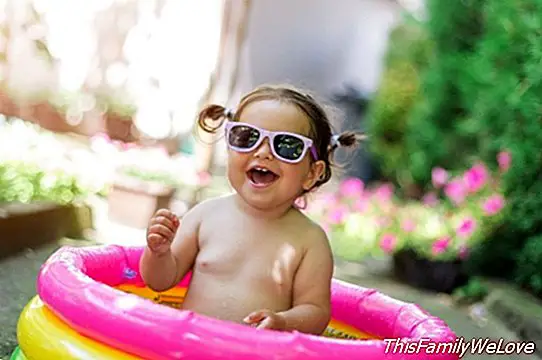Watch your baby: you can drown in only 2 centimeters of water

Did you know a baby can drown in 2 centimeters of water? The Spanish Association of Pediatrics (AEP) recalls that "two centimeters of water in the bottom of a bucket, bathtub, portable pool ... and less than two minutes they are enough for a baby to drown. "
For this reason, the pediatricians of the AEP alert of the need to monitor babies at all times while in the water or playing near it and emptying any container with water after use. But, in addition, they warn that drowning in children under 5 years of age occurs mostly in private pools or in private communities, and that inflatable floats and hoses generate a sense of false security and are not considered safe devices.
Drowning in figures
In Spain, according to data from the National Institute of Statistics (INE), drownings account for 13% of the main causes of infant mortality due to injuries in children between 0 and 14 years old and is the second cause of accidental mortality after accidents traffic.
The main cause of drowning in children under 5 years of age is because they are more independent than a baby, that is, they move with agility and therefore they can escape from the supervision of the adult to which it is necessary to add the particularity that they do not recognize the situations of danger and that they do not yet have dexterity in the water in case of falling into it.
In this regard, the AEP recalls that it has been shown that fencing the complete perimeter of the pool can reduce deaths by drowning by 95% in this age range. It is essential to note that when young children are in or around the water, they must always be within reach and supervised by an adult.
In case of older children who know how to swim, the experienced adult, or the lifeguard, should watch them without losing sight of them, and their attention should be directed at all times to the child or children who are in the water, avoiding situations that may distract him like talking on the phone.
Swimming lessons from the first year of life
Swimming lessons and learning water survival skills can decrease drowning rates in children. There are studies that say that starting classes between 1 and 4 years decreases the drowning rate. However, experts indicate that teaching swimming lessons to young children or those who have not acquired sufficient skills does not prevent drowning, nor does it provide complete protection, so it is necessary to maintain continuous supervision.
On the other hand, children who can not swim, whether they are small or have a disability, should wear a life jacket whenever they bathe or are near water. Inflatable floats and sleeves create a sense of false security and are not considered safe devices, remind pediatricians.
Protect, alert and help (PAS)
In drowning, the seconds count, the speed with which the drowning person is removed from the water and the speed with which Cardiopulmonary Resuscitation (CPR) maneuvers are established are fundamental. In this sense, the training in CPR maneuvers for both parents and children is an effective measure.
Before a case of possible drowning, the ideal is to follow the behavior P.A.S (Protect, alert and help):
- Protect the victim by taking him to a safe place.
- Alert the Emergency Services.
- Help the wounded. Initiate CPR maneuvers if necessary.
Ainhoa Fernández. Spanish Association of Pediatrics AEP




